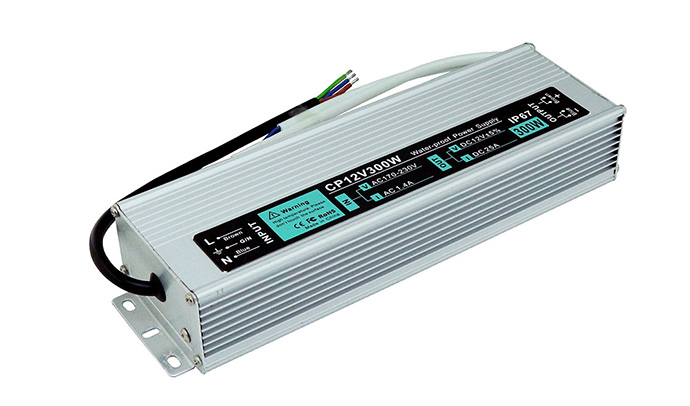Analog CCTV Technical FAQ
How Does a Waterproof Power Supply Differ from a Regular Power Supply?
A power supply is a crucial component in any electronic system, providing a steady and reliable source of electrical energy to power the various components.Waterproof Power Supply

The IP rating is a standardized measure of a product's ability to resist intrusion from dust and water. The first digit in the rating indicates the degree of protection against solid particles, while the second digit represents the level of protection against liquid ingress.
For example, a waterproof power supply may have an IP67 rating, meaning that it is completely protected against dust and can withstand immersion in up to one meter of water for up to 30 minutes.
A waterproof power supply typically has a higher IP rating than a regular power supply, indicating that it is better equipped to handle exposure to water and other liquids. A waterproof power supply may be designed for use in a specific application such as LED lighting, marine electronics, or outdoor signage.
However, not all power supplies are created equal, and there are some key differences between a regular power supply and a waterproof power supply.
Ability to Withstand Exposure to Water or Other Liquids
The most obvious difference between the two is their ability to withstand exposure to water or other liquids. A regular power supply is typically designed to be used indoors, where it is protected from the elements. In contrast, a waterproof power supply is built to withstand exposure to water, moisture, and other liquids, making it ideal for use in outdoor environments or in applications where it may be exposed to water or other fluids.
Waterproof power supplies achieve this by incorporating a range of protective features that prevent water from getting inside and causing damage to the electronics.
For example, the power supply may be enclosed in a waterproof casing that is sealed to prevent water from entering. Additionally, the power supply may have a conformal coating applied to its circuit board, which provides an additional layer of protection against moisture and other contaminants.
Durability
Another key difference between a regular power supply and a waterproof power supply is its durability. Waterproof power supplies are built to withstand harsh conditions, such as extreme temperatures, high humidity, and exposure to dust and debris.
The waterproof power supply is also designed to resist shock and vibration, making them ideal for use in industrial applications or other environments where they may be subject to rough handling.
Performance
In terms of performance, there may be some differences between a regular power supply and a waterproof power supply, depending on the specific application. However, in general, both types of power supplies should provide a steady and reliable source of power to the electronic components they are powering.
quality Waterproof power supply
Power supplies can have different input and output voltages, wattages, and connector types, so it's important to choose the right power supply for your specific needs.
Overall, the key difference between a regular power supply and a waterproof power supply is their ability to withstand exposure to water and other liquids. While a regular power supply may be sufficient for indoor use in dry environments, a waterproof power supply is a must-have for applications where exposure to water and other liquids is likely.
If you are considering using electronic components in an outdoor or wet environment, a waterproof power supply may be the best choice to ensure reliable and long-lasting performance.
PREVIOUS:What Is USB-C
NEXT:What is fiber optics
Categories
Contact Us
Contact: Sales Departmment
Phone: 0086-13509605206
Tel: 0086-755-2919 5509
Email: sales03@cctv-accessory.com
Whatsapp: 86-13509605206
Add: 4F, B Building, Lanshang Pioneering Park, Xinfeng Rd, Longgang District, Shenzhen, China
 Casview sales
Casview sales Casview Sales
Casview Sales 86-13509605206
86-13509605206